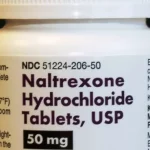Medication-Assisted Treatment Goals, Policies, and Procedures

What is Medication-Assisted Treatment?
Medication-Assisted Treatment (MAT) is an evidence-based approach to treating substance use disorders, particularly opioid addiction. It combines the use of medications with counseling and behavioral therapies to address the complex nature of addiction.
MAT involves the use of specific medications that help to reduce withdrawal symptoms and cravings associated with opioid use. The most commonly used medications for MAT are:
1. Methadone: A long-acting opioid agonist that helps reduce withdrawal symptoms and cravings. It is usually administered through specialized clinics.
2. Buprenorphine: A partial opioid agonist that binds to opioid receptors in the brain, reducing withdrawal symptoms and cravings. It can be prescribed by qualified healthcare providers in office-based settings.
3. Naltrexone: An opioid antagonist that blocks the effects of opioids in the brain. It is available in extended-release injectable form or as a daily oral medication.
MAT is typically combined with counseling and behavioral therapies as part of a comprehensive treatment plan. These therapies can include individual counseling, group therapy, family therapy, and support groups. The goal is to address the underlying factors contributing to addiction and develop strategies for relapse prevention.
MAT has been shown to be effective in reducing opioid use, overdose rates, and criminal activity associated with drug use. It can also improve retention in treatment programs and increase the likelihood of long-term recovery. However, it is important to note that MAT is not a standalone solution and should be accompanied by comprehensive care and support.
It’s worth mentioning that MAT is not limited to opioid addiction. It can also be used for the treatment of alcohol use disorder and certain other substance use disorders. The specific medications and treatment approaches may vary depending on the substance being addressed.
What are the goals of medication-assisted treatment?
The goals of Medication-Assisted Treatment (MAT) are centered around the effective management and recovery from substance use disorders. Here are the primary goals of MAT:
1. Reduce Withdrawal Symptoms: MAT aims to alleviate the uncomfortable and sometimes severe withdrawal symptoms that occur when an individual stops using opioids or other addictive substances. Medications used in MAT, such as methadone or buprenorphine, help stabilize brain chemistry, reducing or eliminating withdrawal symptoms and cravings.
2. Suppress Cravings: MAT medications help to reduce intense cravings for opioids or other substances, making it easier for individuals to abstain from drug use. By reducing cravings, MAT promotes a more stable and controlled state of mind, enabling individuals to focus on their recovery.
3. Stabilize Physical and Psychological Health: MAT provides individuals with a stable and controlled dose of medication, which helps restore physical health and normalize brain function. By reducing the physical and psychological effects of substance use, MAT allows individuals to stabilize their overall health, improve cognitive function, and regain a sense of well-being.
4. Facilitate Engagement in Counseling and Behavioral Therapies: MAT is typically combined with counseling and behavioral therapies as part of a comprehensive treatment plan. The use of medications can help individuals better engage in therapy by reducing the disruptive effects of withdrawal and cravings. With a clearer mind and increased stability, individuals can actively participate in therapy, addressing the underlying factors contributing to their substance use and developing effective coping strategies for relapse prevention.
5. Reduce the Risk of Relapse and Overdose: MAT has been shown to significantly reduce the risk of relapse and overdose. By providing medications that alleviate withdrawal symptoms and cravings, individuals are less likely to return to drug use. The continued use of MAT medications can help sustain recovery by blocking the effects of opioids or reducing their appeal, making it less likely for individuals to relapse or overdose.
6. Improve Social Functioning and Quality of Life: MAT aims to improve social functioning and overall quality of life for individuals with substance use disorders. By providing stability and support, MAT enables individuals to regain control over their lives, rebuild relationships, reintegrate into the community, pursue education or employment, and engage in meaningful activities that contribute to their well-being and recovery.
It’s important to note that the specific goals of MAT may vary for each individual based on their unique circumstances and treatment needs. The ultimate objective is to support individuals in achieving and sustaining long-term recovery from substance use disorders, promoting overall health, well-being, and improved quality of life.
Medication-Assisted Treatment Policies and Procedures
The policies and procedures surrounding Medication-Assisted Treatment (MAT) can vary depending on the country, region, and healthcare system in which the treatment is being administered. However, I can provide you with a general overview of the common policies and procedures associated with MAT.
1. Licensing and Certification: Healthcare providers who wish to offer MAT typically need to obtain specific licenses or certifications. These requirements ensure that providers meet certain standards of training and expertise in addiction treatment and can safely prescribe and administer the medications used in MAT.
2. Patient Evaluation and Assessment: Before starting MAT, patients undergo a comprehensive evaluation and assessment to determine their eligibility and the most appropriate treatment plan. This evaluation typically includes a medical history review, physical examination, laboratory tests, and assessment of substance use patterns and related psychosocial factors.
3. Treatment Planning: Based on the assessment, a treatment plan is developed for each individual. The plan outlines the specific medications to be used, dosages, and duration of treatment. It also includes counseling and behavioral therapies that will be integrated into the treatment process.
4. Medication Prescription and Administration: MAT medications, such as methadone or buprenorphine, are prescribed by qualified healthcare providers. The prescription process may involve adherence to specific regulations, including controlled substance prescribing guidelines and monitoring requirements. Medications can be dispensed through specialized clinics, pharmacies, or office-based settings, depending on local regulations.
5. Ongoing Monitoring and Adjustment: During MAT, patients are regularly monitored to assess their progress and adjust the treatment plan if necessary. Monitoring may include regular check-ins, urine drug screenings, and assessments of treatment response, side effects, and overall well-being.
6. Counseling and Behavioral Therapies: MAT is typically combined with counseling and behavioral therapies to address the psychosocial aspects of addiction. The specific types and frequency of counseling sessions may vary, but common approaches include individual counseling, group therapy, family therapy, and support groups. These therapies aim to support recovery, enhance coping skills, and address underlying psychological and social factors contributing to addiction.
7. Compliance and Treatment Agreement: Patients participating in MAT often need to adhere to specific treatment agreements that outline expectations, responsibilities, and guidelines for medication use, counseling attendance, and overall treatment compliance. These agreements may also include provisions for consequences related to non-compliance or misuse of medications.
8. Collaboration and Referral: MAT providers often collaborate with other healthcare professionals, including primary care providers, mental health specialists, and social service agencies, to provide comprehensive care. Referrals to additional services, such as housing assistance, employment support, or specialized addiction treatment programs, may be made as needed.
It’s important to note that the specific policies and procedures related to MAT can vary significantly based on local regulations, healthcare system structures, and individual treatment programs. If you are seeking MAT or interested in learning more about the policies and procedures in your area, it is recommended to consult with local addiction treatment centers, healthcare providers, or government health agencies for accurate and up-to-date information.
Statutes, regulations, and guidelines for Medication-Assisted Treatment (MAT)
Statutes, regulations, and guidelines for Medication-Assisted Treatment (MAT) can vary depending on the country and jurisdiction in which the treatment is being provided. Here are some examples of the legal and regulatory frameworks that govern MAT in the United States:
1. Drug Addiction Treatment Act of 2000 (DATA 2000): DATA 2000 is a federal law in the United States that allows qualified physicians to prescribe and dispense certain medications, such as buprenorphine, for the treatment of opioid use disorder in office-based settings. It outlines the requirements and procedures for physicians to obtain a waiver to prescribe these medications for MAT.
2. Controlled Substances Act (CSA): The CSA is a federal law that regulates the manufacture, distribution, and dispensing of controlled substances, including medications used in MAT. It sets requirements for the storage, record-keeping, and prescribing practices related to these medications.
3. Substance Abuse and Mental Health Services Administration (SAMHSA) Guidelines: SAMHSA, a branch of the U.S. Department of Health and Human Services, provides guidelines and recommendations for the use of medications in the treatment of substance use disorders. These guidelines offer evidence-based practices and clinical standards for the use of medications like methadone, buprenorphine, and naltrexone in MAT.
4. State Licensing and Certification Requirements: Each state in the U.S. may have its own licensing and certification requirements for healthcare providers and treatment facilities that offer MAT. These requirements ensure that providers meet certain standards of training, qualifications, and expertise in addiction treatment. They also outline regulations for the operation of opioid treatment programs and the dispensing of MAT medications.
5. Confidentiality and Privacy Laws: MAT providers are subject to federal laws, such as the Health Insurance Portability and Accountability Act (HIPAA), which protect the confidentiality and privacy of patient information. These laws set guidelines for the storage, use, and disclosure of patient records and information related to MAT.
It’s important to note that these examples are specific to the United States, and the legal and regulatory landscape for MAT may differ in other countries. Additionally, within a country, there may be variations in statutes, regulations, and guidelines at the state or regional level.
If you are seeking information about the specific statutes, regulations, and guidelines governing MAT in your jurisdiction, it is recommended to consult local healthcare authorities, regulatory agencies, or professional associations specializing in addiction treatment for the most accurate and up-to-date information.





